 W
WDa Nang is a class-1 municipality and the fifth-largest city in Vietnam by population. It lies on the coast of the South China Sea at the mouth of the Han River, and is one of Vietnam's most important port cities. As one of the country's five direct-controlled municipalities, it falls under the administration of the central government.
 W
WDamascus ( də-MASS-kəs; Arabic: دِمَشْق, romanized: Dimašq [diˈmaʃq], Syrian Arabic: [dɪˈmaʃʔ] is the capital of Syria; it became the country's largest city in the early 2010s, following the decline in population of Aleppo during the battle for the city. It is colloquially known in Syria as aš-Šām and titled the "City of Jasmine". Damascus is a major cultural center of the Levant and the Arab world. The city had an estimated population of 2,079,000 as of 2019.
 W
WThe city now known as Ho Chi Minh City has gone by several different names during its history, reflecting settlement by different ethnic, cultural and political groups. Originally known as Prey Nôkôr while a part of the Khmer Empire, it came to be dubbed Sài Gòn informally by Vietnamese settlers fleeing the Trịnh–Nguyễn War to the north. In time, control of the city and the area passed to the Vietnamese, who gave the city the name of Gia Định. This name remained until the time of French conquest in the 1860s, when the occupying force adopted the name Saïgon for the city, a westernized form of the traditional Vietnamese name. The current name was given after the Fall of Saigon in 1975, and honors Hồ Chí Minh, the first leader of North Vietnam. Even today, however, the informal name of Sài Gòn remains in daily speech both domestically and internationally, especially among the Vietnamese diaspora and local southern Vietnamese.
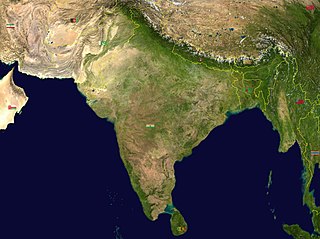 W
WThe Republic of India has two principal short names in both official and popular English usage, each of which is historically significant, "India" and "Bharat". The first article of the Constitution of India states that "India, that is Bharat, shall be a union of states," implicitly codifying "India" and "Bharat" as equally official short names for the Republic of India. A third name, "Hindustan", is sometimes an alternative name for the region comprising most of the modern Indian states of the subcontinent when Indians speak among themselves. The usage of "Bharat", "Hindustan", or "India" depends on the context and language of conversation.
 W
WJakarta, officially the Special Capital Region of Jakarta, is the capital of Indonesia. On the northwest coast of the world's most-populous island of Java, it is the centre of economy, culture and politics of Indonesia with a population of 10,770,487 in the city as of 2020. Although Jakarta only covers 699.5 square kilometres (270.1 sq mi), the smallest among any Indonesian provinces, its metropolitan area covers 6,392 square kilometres (2,468 sq mi), and is the world's second-most populous urban area after Tokyo, with a population of about 35.934 million as of 2020. Jakarta's business opportunities, as well as its potential to offer a higher standard of living, have attracted migrants from across the Indonesian archipelago, making it a melting pot of numerous cultures. Jakarta is nicknamed the "Big Durian", the thorny strongly-odored fruit native to the region, seen as the Indonesian equivalent of the "Big Apple".
 W
WNames of Jerusalem refers to the multiple names by which the city of Jerusalem has been known and the etymology of the word in different languages. According to the Jewish Midrash, "Jerusalem has 70 names". Lists have been compiled of 72 different Hebrew names for Jerusalem in Jewish scripture.
 W
WA kampong or kampung is a village in Brunei, Indonesia, Malaysia and Singapore and a "port" in Cambodia. The term applies to traditional villages, especially of indigenous people, and has also been used to refer to urban slum areas and enclosed developments and neighbourhoods within towns and cities in Malaysia, Indonesia, Singapore, Cambodia, Sri Lanka and Christmas Island. The traditional kampong village designs and architecture have been targeted for reform by urbanists and modernists and have also been adapted by contemporary architects for various projects. Traditional kampongs are also a tourist attraction.
 W
WAlthough Herodotus and Xenophon referred to the entire region as Susiana, the name Khuzestan is what has been referred to the southwesternmost province of Persia (Iran) from antiquity.
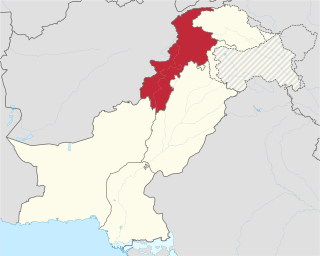 W
WThe Pakistani province of Khyber Pakhtunkhwa has been known by a number of names throughout its history. In addition to North-West Frontier Province, the official name by which it was known from 1901 to 2010, other names used or proposed for the province include Gandhara, Afghania, Pakhtunistan, Pashtunistan, Pathanistan, Sarhad, Abasin, Khyber, or a combination of these and other names.
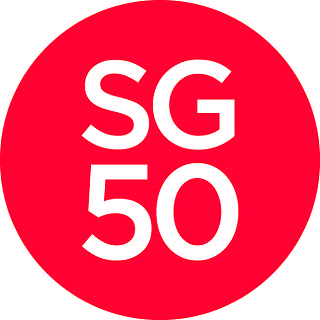 W
W"Little red dot" is a nickname often used in the media, and in casual conversation, as a reference to Singapore. It refers to how the nation is depicted on many maps of the world and of Asia as a red dot. The city-state comprising the main island and all its islets – a total land area of no more than 718.3 square kilometres – is much smaller than its Southeast Asian neighbours.
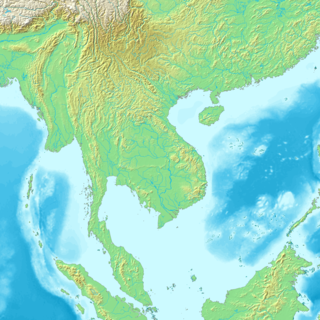 W
WMainland Southeast Asia is the continental portion of Southeast Asia. It lies east of the Indian subcontinent and south of China and is bordered by the Indian Ocean to the west and the Pacific Ocean to the east. It includes the countries of Cambodia, Laos, Myanmar (Burma), Peninsular Malaysia, Thailand and Vietnam.
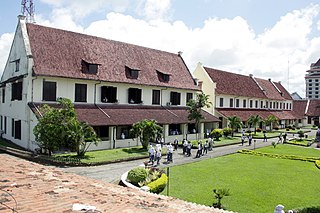 W
WMakassar is the capital of the Indonesian province of South Sulawesi. It is the largest city in the region of Eastern Indonesia and the country's fifth-largest urban center after Jakarta, Surabaya, Bandung, and Medan. The city is located on the southwest coast of the island of Sulawesi, facing the Makassar Strait. Makassar is not only the gateway of Eastern Indonesia, but also the epicenter of West and East Indonesia, as well as between Australia and Asia.
 W
WThe country known in English as both Myanmar and Burma has undergone changes in both its official and popular names worldwide. The choice of names stems from the existence of two different names for the country in Burmese, which are used in different contexts.
 W
WPlace names in Palestine have been the subject of much scholarship and contention, particularly in the context of the Arab–Israeli conflict. The significance of place names in Palestine lies in their potential to legitimize the historical claims asserted by the involved parties, all of whom claim priority in chronology, and who use archaeology, map-making, and place names as their proofs. Many of the names underwent a process of Hebraization in the 1920s and 1950s.
 W
WThis article presents a list of notable historical references to the name Palestine as a place name in the Middle East throughout the history of the region, including its cognates such as "Filastin" and "Palaestina."
 W
WThe name Philippines derives from that of the 16th-century Spanish king Philip II, and is a truncated form of Philippine Islands. During the expedition of Ruy López de Villalobos to the region, the Spanish sailor Bernardo de la Torre bestowed the name Las Islas Filipinas on the islands of Leyte and Samar, in honor of the then Prince of Asturias. Despite the existence of other names, Filipinas ("Philippines") was eventually adopted as the name of the entire archipelago.
 W
WSri Lankan place name etymology is characterized by the linguistic and ethnic diversity of the island of Sri Lanka through the ages and the position of the country in the centre of ancient and medieval sea trade routes. While typical Sri Lankan placenames of Sinhalese origin vastly dominate, toponyms which stem from Tamil, Dutch, English, Portuguese and Arabic also exist. In the past, the many composite or hybrid place names and the juxtaposition of Sinhala and Tamil placenames reflected the coexistence of people of both language groups. Today, however, toponyms and their etymologies are a source of heated political debate in the country as part of the political struggles between the majority Sinhalese and minority Sri Lankan Tamils.
 W
WSeoul has been known in the past by the successive names Wiryeseong, Namgyeong, Hanseong or Hanyang. During the period of Japanese occupation (1910–1945), Seoul was referred to by the Japanese exonym Keijō , or Gyeongseong in Korean. After World War II and Korea's liberation, the city took its present name, Seoul, which had been in use since at least 1882, at times concurrently with other names.
 W
WTbilisi, in some countries also still known by its pre-1936 international designation, Tiflis, is the capital and the largest city of Georgia, lying on the banks of the Kura River with a population of approximately 1.5 million people. Tbilisi was founded in the 5th century AD by Vakhtang I of Iberia, and since then has served as the capital of various Georgian kingdoms and republics. Between 1801 and 1917, then part of the Russian Empire, Tbilisi was the seat of the Imperial Viceroy, governing both Southern and Northern Caucasus.
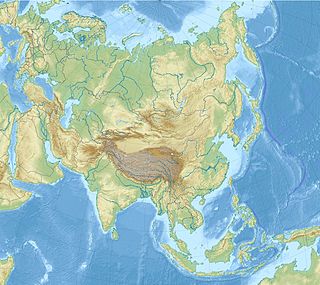 W
WUlaanbaatar, formerly anglicised as, and still called, Ulan Bator, is the capital and largest city of Mongolia. The city is not part of any aimag (province), and its population as of 2014 was over 1.3 million, almost half of the country's population. The municipality is in north central Mongolia at an elevation of about 1,300 metres (4,300 ft) in a valley on the Tuul River. It is the country's cultural, industrial and financial heart, the centre of Mongolia's road network and connected by rail to both the Trans-Siberian Railway in Russia and the Chinese railway system.
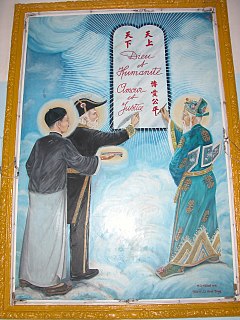 W
WThroughout history, there were many names used to refer to Vietnam. Besides official names, there are names that are used unofficially to refer to the territory of Vietnam. Vietnam was called Văn Lang during the Hùng Vương Dynasty, Âu Lạc when An Dương was king, Nam Việt during the Triệu Dynasty, Van Xuan during the Anterior Lý Dynasty, Đại Cồ Việt during the Đinh dynasty and Early Lê dynasty. Starting in 1054, Vietnam was called Đại Việt. During the Hồ dynasty, Vietnam was called Đại Ngu.